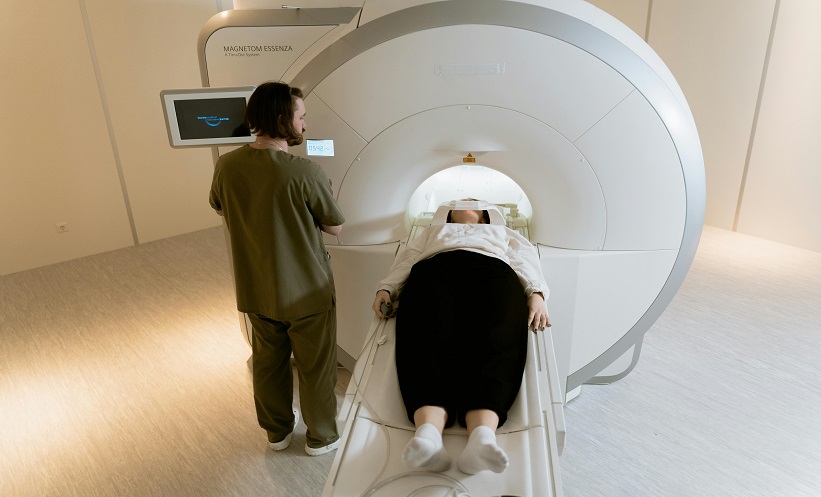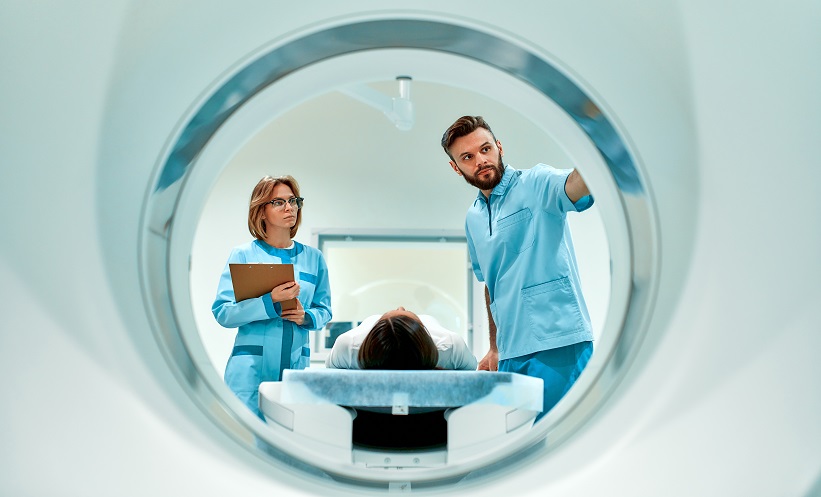Heeral Patel | Editorial Assistant
![]()
In the European Congress of Radiology (ECR) 2022 Overture, speakers discussed the disruptions to screening programmes for breast cancer and colorectal cancer that occurred during the COVID-19 pandemic. In the session, speakers shared the lessons they have learnt and ideas for improving screening to prevent future disruptions.
COVID-19 has significantly impacted healthcare in a number of ways, from delaying screening procedures to the rapid roll-out of telemedicine. In this presentation, speakers from across Europe discussed how the pandemic impacted screening for breast and colorectal cancer, the adaptations that were made to screening programmes in response, and the subsequent consequences of these adaptations. Finally, the committee of the ECR 2022 Overture and the multidisciplinary panel had a highly engaging discussion.
BREAST CANCER SCREENING PROCEDURES AND ADAPTATIONS DURING COVID-19
Breast cancer screening across Europe is relatively cohesive, but not all countries follow the same screening programme. Women in the European Union (EU) are recommended to undertake screening once every 2 years for breast cancer, whereas women in the UK are recommended to undertake screening once every 3 years. In addition, there is a discrepancy in the age at which women are screened for breast cancer, with some countries starting earlier and stopping later. The first speaker, Fiona Gilbert, Professor of Radiology, University of Cambridge, UK, shared the changes and adaptations that were made in breast cancer screening across Europe during the pandemic.
Gilbert discussed a 2017 position paper by the European Society of Breast Imaging (EUSOBI), in which the authors outlined a consensus statement for breast cancer screening. The publication suggested that women between the ages of 50 and 69 years old should have twice-yearly mammograms read by two experts. Other recommendations included that woman that are carriers of the BRCA gene, who have an elevated risk of breast cancer, should have an annual MRI scan.
Gilbert discussed how COVID-19 caused disruptions to breast cancer screening programmes across Europe. The importance of breast services remaining open for patients that are symptomatic and prioritising women with symptoms or lumps was also highlighted.
Screening programmes had to overcome many obstacles during the pandemic, such as increased time between appointments, social distancing requirements, and capacity issues. So, how exactly did breast cancer screening programmes adapt to COVID-19?
Gilbert explained that hospitals minimised the number of patients entering the hospital by providing results over the phone, triaging patients where necessary, and limiting the number of family members accompanying patients to their appointments. Many screening programmes began to reopen in the summer of 2020; however, due to the initial pause in these programmes, there was a massive backlog of patients awaiting screening.
Moreover, there were difficulties in restarting screening due to the prevalence of staff illnesses, capacity issues, and social distancing measures. Most hospitals had stopped inviting patients over 70 years old for screening and prioritised high-risk and medium-risk women instead. In the UK, in-person appointments were changed to telephone calls, which actually increased attendance from 65% to 95%.
Gilbert outlined previous publications that have evaluated the adverse events caused by delaying screening. These papers examined the effect of screening disruptions due to COVID-19 and showed that even a 6-month delay could lead to a shift of cancer from Stage 1 to Stage 2 and result in two additional breast cancer deaths per year. Additionally, with a delay of 12 months, it was found that the 5-month survival of patients decreased from 91.4% to 89.5%.
In the concluding remarks, Gilbert acknowledged that a benefit of delayed screening was the increased effort made by policy makers to ensure that hospitals were provided with additional resources, such as more doctors and better screening equipment, to help with the backlog. Additionally, the successful roll-out of the vaccine, the implementation of face masks, and improved social distancing measures meant that breast cancer screening could resume soon after the first wave of COVID-19 in the UK had subsided. Future directions involve monitoring these adverse events and prompting policy makers to provide additional resources so that countries can get back on track with the screening programmes they have in place.
COLORECTAL CANCER SCREENING PROCEDURES AND ADAPTATIONS DURING THE COVID-19 PANDEMIC
The second speaker shared their experience of the changes and adaptations made to bowel cancer screening during the COVID-19 pandemic. Evelien Dekker, Professor of Gastrointestinal Oncology, University of Amsterdam, the Netherlands, discussed how screening was affected in the Netherlands, the consequences of these delays, and the lessons to learnt for the future. Dekker emphasised that late detection of colorectal cancer results in high mortality, and one major factor that can prevent this is regular screening.
Currently, colonoscopy is the best method to detect colorectal cancer. However, colonoscopy is an invasive procedure that is both risky and expensive. A recently adapted screening programme, called the faecal immunochemical test (FIT), uses blood in the stool to screen for colorectal cancer. Data from the Netherlands has shown that FIT has a high participation rate of 70%, and there is evidence suggesting that using FIT screening decreases mortality.
Many countries across Europe use FIT and colonoscopy for colorectal cancer screening. However, during COVID-19, colorectal screening programmes came to a halt, much like breast cancer screening. Many countries had a 3-month stop in screening, and FIT was being considered even in countries that had once relied heavily on colonoscopy. Dekker shared how she believes the pandemic revived useful discussions on cancer screening not just for now, but for the future.
During the pandemic, colorectal cancer prevention was at stake; there was an urgent need to optimise screening programmes. One of the main issues with colorectal screening during the COVID-19 pandemic was poor participation. Patients were worried about contracting the virus from healthcare workers and hospitals. To overcome this fear, hospitals aimed to improve public awareness of the importance of screening, provide telemedicine options, offer FIT screening via mail, and arrange regular COVID testing for staff and patients.
Moreover, another issue with colorectal cancer screening during the pandemic was capacity. For countries that relied heavily on colonoscopy, it was essential to move patients to FIT screenings to cope with the workload, as patients could do this screening procedure from the comfort of their homes. Another suggestion for coping with capacity issues involved prioritising screening patients by their age, gender, and screening history. Ultimately, the best strategy to temporarily decrease colonoscopy demand was to extend the screening interval from 24 to 34 months.
Dekker stressed the importance of learning from the pandemic by continually monitoring, calculating, and adapting screening programmes in order to prepare for any future disruptions.
LESSONS LEARNT DURING COVID-19 FOR SCREENING PROGRAMMES
The congress committee and multidisciplinary panel had an engaging round table discussion about lessons learnt during COVID-19 for those in the breast cancer and colorectal field. Dekker explained that we should avoid starting screening with invasive procedures, and use FIT for initial colorectal cancer screening instead. It was suggested that better tools must be developed, with higher specificity and modelling using age, sex, and previous screening results. Scientists are currently developing molecular markers as a predictor for colorectal cancer, and this could reduce unnecessary colonoscopies.
The roundtable also shared their experiences of how patients who required screening coped during the pandemic. Several patients were worried about their symptoms but were equally worried about contracting COVID-19. This fear resulted in patients with symptoms staying at home and, when they finally did come to the hospital, their tumours were more advanced. Strategies to overcome this involved press releases, improving communication with patients, changing to telephone appointments, and ensuring that all necessary COVID-19 measures were in place, which helped to reassure patients and encourage them to get screened.
According to Dekker, participation rates remained high in the Netherlands, due to regular COVID-19 testing, protection materials, and the fact that some screening facilities were not inside a hospital. By having endoscopy units outside of the hospital, patients were more likely to attend their appointments as they felt safer entering a separate centre than a crowded hospital. This was also evident in the UK, as Gilbert confirmed that generally women were happier to go to a mobile van for breast cancer screening than to an appointment at a hospital.
Another point shared by Gilbert was that if there was home testing available for breast cancer, this could help to screen patients who could not go into the hospital. Ongoing trials are examining potential biomarkers that might help to detect solid breast cancer tumours. However, Gilbert added that the preliminary results were unclear as to whether these tests could detect breast cancer early enough to influence mortality; nonetheless, they were optimistic and hoped that this could happen in the future.
Scientists and physicians need to consider better ways to deliver screening in Europe, particularly for breast cancer, and to optimise triaging by having improved molecular tests. Although the pandemic impacted screening and created a backlog of unscreened patients, the panel are optimistic that, by combining all of the lessons that have been learnt from this event, they can overcome these screening issues and be better adapted for future crises.








